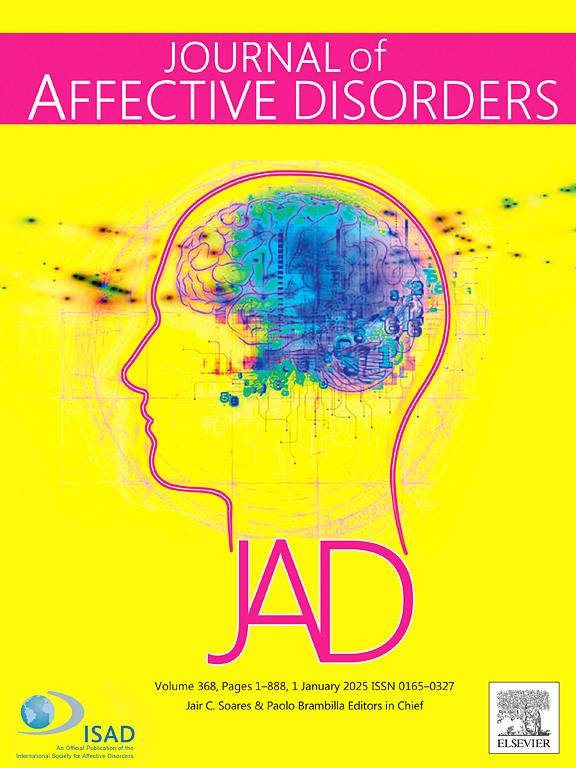Trauma exposure and risk of post-traumatic stress disorder among youth and young adults during the Russia-Ukraine war
IF 4.9
2区 医学
Q1 CLINICAL NEUROLOGY
引用次数: 0
Abstract
Background
The Russia-Ukraine War has led to widespread trauma. This study examines how various traumatic events influence the risk of Post-Traumatic Stress Disorder (PTSD) among Ukrainian youth and young adults.
Objective
To investigate the prevalence of PTSD symptoms and the association between different trauma types and PTSD risk in a war-affected Ukrainian population aged 10–26 years.
Participants and setting
2086 youth and young adults attending schools and universities in Eastern Ukraine after the Russian invasion onset were assessed between October 2022 and February 2023. The data were collected as part of two surveys: Ukrainian Longitudinal Study (ULS) and annual cross-sectional survey Youth and Drugs (ULS+).
Methods
Trauma exposure was measured using the 14-item Self-Report Trauma History Form, and PTSD symptoms were evaluated with the UCLA PTSD Reaction Index for DSM-5 Brief Form. Bivariate and multivariate logistic regression models examined associations between trauma types, sociodemographics and clinical PTSD.
Results
23.49 % of participants met the clinical PTSD cutoff. Interpersonal traumas like forced sex (aOR = 1.66, 95 % CI:1.03–2.68), unwanted sexual touching (aOR = 1.81, 95 % CI:1.31–2.49), and physical assault at home (aOR = 1.55, 95 % CI:1.04–2.31) showed stronger associations with PTSD than non-interpersonal traumas including war. Female sex (aOR = 0.35, 95 % CI:0.25–0.49) and lower income (aOR = 0.75, 95 % CI:0.67–0.84) increased PTSD risk.
Conclusions
Study reports high prevalence of PTSD symptoms among youth and young adults in a war-affected region, with interpersonal trauma – particularly sexual and physical violence – posing significantly higher risk than war-related trauma. Findings highlight the need for trauma-informed interventions tailored to the Ukrainian context.
俄乌战争期间青年和年轻人的创伤暴露和创伤后应激障碍风险。
背景:俄乌战争造成了广泛的创伤。本研究探讨了各种创伤事件如何影响乌克兰青年和年轻人创伤后应激障碍(PTSD)的风险。目的:探讨乌克兰10-26岁战争影响人群PTSD症状的患病率及不同创伤类型与PTSD风险的关系 。参与者和环境:在俄罗斯入侵开始后的2022年10月至2023年2月期间,对乌克兰东部学校和大学的2086名青年和年轻人进行了评估。数据是作为两项调查的一部分收集的:乌克兰纵向研究(ULS)和年度横截面调查青年和毒品(ULS+)。方法:采用14项创伤史自述量表测量创伤暴露程度,采用DSM-5简表UCLA PTSD反应指数评估创伤后应激障碍症状。双变量和多变量logistic回归模型检验了创伤类型、社会人口统计学和临床PTSD之间的关系。结果:23.49 %的受试者达到PTSD临床分界线。人际创伤像被迫性(aOR = 1.66,95 % CI: 1.03 - -2.68),不必要的性接触(aOR = 1.81,95 % CI: 1.31 - -2.49),和物理攻击在家里(aOR = 1.55,95 % CI: 1.04 - -2.31)显示关联的强度比non-interpersonal创伤和创伤后应激障碍包括战争。女性(aOR = 0.35,95 % CI:0.25-0.49)和低收入(aOR = 0.75,95 % CI:0.67-0.84)增加PTSD风险。结论:研究报告称,在受战争影响的地区,创伤后应激障碍症状在青年和年轻人中非常普遍,人际创伤——尤其是性暴力和身体暴力——比战争相关创伤的风险要高得多。调查结果强调需要根据乌克兰的情况进行创伤知情干预。
本文章由计算机程序翻译,如有差异,请以英文原文为准。
求助全文
约1分钟内获得全文
求助全文
来源期刊

Journal of affective disorders
医学-精神病学
CiteScore
10.90
自引率
6.10%
发文量
1319
审稿时长
9.3 weeks
期刊介绍:
The Journal of Affective Disorders publishes papers concerned with affective disorders in the widest sense: depression, mania, mood spectrum, emotions and personality, anxiety and stress. It is interdisciplinary and aims to bring together different approaches for a diverse readership. Top quality papers will be accepted dealing with any aspect of affective disorders, including neuroimaging, cognitive neurosciences, genetics, molecular biology, experimental and clinical neurosciences, pharmacology, neuroimmunoendocrinology, intervention and treatment trials.
 求助内容:
求助内容: 应助结果提醒方式:
应助结果提醒方式:


